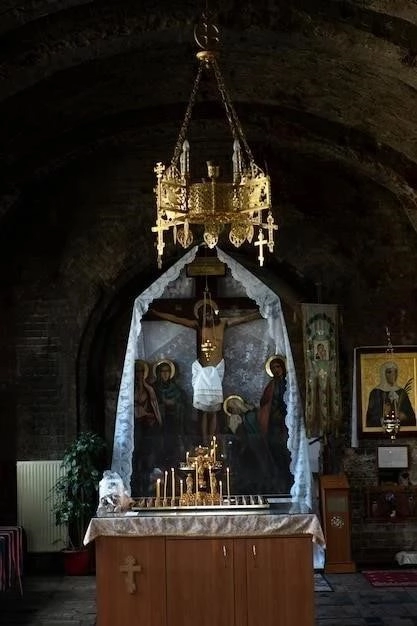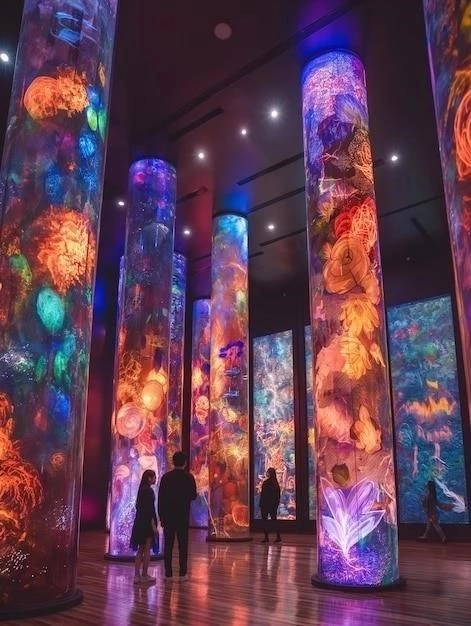A Neighborhood Steeped in History
Carroll Gardens, nestled in northwestern Brooklyn, boasts a rich history interwoven with Italian heritage. What was once a thriving dockland serving South Brooklyn transformed into a haven for Italian immigrants in the late 19th and early 20th centuries. This wave brought with it a distinct culture that permeated every facet of the neighborhood.

The Italian Influence
The indelible mark of Italian immigrants on Carroll Gardens is undeniable. Arriving in the late 19th and early 20th centuries, they were drawn to the area then known as South Brooklyn, a bustling dockland offering employment opportunities. As they settled, they wove their traditions and heritage into the very fabric of the neighborhood, creating an enclave that continues to resonate with their legacy.
The Italian influence on Carroll Gardens is most palpable in its culinary landscape. Family-run businesses like Caputo’s Bakery, a neighborhood institution since 1904, stand as testaments to the enduring commitment to traditional Italian baking. The aroma of freshly baked rustic bread and the sight of elaborate cakes, all made on premises, evoke a sense of old-world charm and a steadfast adherence to time-honored recipes.
Beyond culinary delights, the Italian community fostered a vibrant social fabric. Churches like St. Agnes Roman Catholic and St. Mary’s Star of the Sea served as spiritual and social anchors, hosting gatherings and reinforcing a shared cultural identity. The Italian language resonated through the streets, and community organizations provided essential services, including citizenship classes that helped thousands navigate their new lives in America.
The visual landscape of Carroll Gardens, too, bears witness to the Italian presence. Statues of religious figures, nestled in the front yards of the iconic brownstones, stand as quiet tributes to their faith and heritage. During the Christmas season, the neighborhood bursts into a festive display of lights and decorations, a tradition carried on through generations, reflecting the warmth and conviviality deeply ingrained in Italian culture.
Carroll Gardens Today
While Carroll Gardens retains the charm of its Italian-American heritage, the neighborhood has evolved into a vibrant tapestry of old and new. The influx of young professionals and artists, drawn to its brownstone-lined streets and intimate community atmosphere, has brought a contemporary energy that complements its historical roots.
The neighborhood’s commercial corridors, once dominated by Italian businesses, now boast a diverse mix of boutiques, artisanal coffee shops, and trendy restaurants. This eclectic blend caters to a sophisticated palate while still offering a taste of classic Italian flavors. Long-standing establishments like Esposito’s Pork Store, renowned for its homemade sausages and sharp provolone, continue to thrive, demonstrating the enduring appeal of authentic culinary traditions.
Real estate in Carroll Gardens has become highly sought after, with its stately brownstones commanding top dollar. Many of these historic homes have been meticulously restored, preserving their architectural integrity while incorporating modern amenities. The neighborhood’s commitment to maintaining its architectural legacy is evident in the Carroll Gardens Historic District, which safeguards the unique character of its 19th-century row houses.
Despite its transformation into a coveted Brooklyn enclave, Carroll Gardens has managed to retain its strong sense of community. Residents take pride in their neighborhood’s history and actively participate in local events and organizations. The streets are alive with a mix of longtime residents and newcomers, all contributing to the dynamic atmosphere that defines Carroll Gardens today.

Demographics and Diversity
While Carroll Gardens historically served as a haven for Italian immigrants, its demographics have shifted in recent decades, reflecting broader trends of urban change and gentrification. While the Italian-American presence remains palpable, the neighborhood now encompasses a more diverse population, contributing to its evolving cultural landscape.
The influx of young professionals and families, attracted by Carroll Gardens’ brownstone charm and proximity to Manhattan, has led to a decrease in the percentage of Italian-Americans residing in the area. Census data reveals a notable increase in residents with higher education levels and incomes, indicative of the neighborhood’s rising affluence.
This demographic shift has fostered a more heterogeneous community, with a growing presence of Asian and Hispanic residents. However, this transition has also sparked discussions about affordability and displacement, as longtime residents grapple with the challenges of rising housing costs and the changing character of their neighborhood.
Despite these demographic shifts, Carroll Gardens benefits from a shared appreciation for its history and a strong sense of community. Residents, both old and new, actively engage in local initiatives and cultural events, contributing to a vibrant and inclusive atmosphere that celebrates its diverse heritage.

Architectural Significance: The Brownstones
The brownstones of Carroll Gardens stand as proud emblems of the neighborhood’s architectural heritage, their stately presence defining the very character of its streetscapes. Erected primarily in the late 19th century, these row houses represent a pivotal period in Brooklyn’s residential development, showcasing the craftsmanship and aesthetic sensibilities of the era.
Crafted from brown sandstone, a material readily available in the region, these homes typically feature Italianate or Neo-Grec architectural details, reflecting popular styles of the time. Ornate cornices, arched doorways, and decorative window treatments embellish their facades, creating a sense of grandeur and sophistication. Many retain their original stoop railings and intricate ironwork, adding to their historical charm.
Beyond their exterior allure, the brownstones of Carroll Gardens are renowned for their spacious interiors. High ceilings, large windows, and elegant moldings create an airy and graceful ambiance. Original pocket doors, often crafted from rich mahogany, separate formal living and dining rooms, while grand staircases lead to upper levels where bedrooms offer sanctuary from the bustling city below.
The architectural integrity of these brownstones has been carefully preserved, thanks in part to the establishment of the Carroll Gardens Historic District. This designation ensures that alterations and renovations adhere to strict guidelines, protecting the neighborhood’s unique architectural legacy for generations to come.

Carroll Gardens Historic District
Established in 1973, the Carroll Gardens Historic District stands as a testament to the neighborhood’s commitment to preserving its architectural heritage. This designation encompasses a concentrated area of primarily residential blocks, safeguarding the unique character and charm of its 19th-century buildings.
The heart of the district lies along Carroll Street and President Street, where rows of meticulously maintained brownstones evoke a bygone era of urban elegance. These stately homes, predominantly constructed between the 1860s and 1880s, showcase a remarkable consistency in scale and design, reflecting the architectural trends and craftsmanship of the period.
The district’s guidelines ensure that any exterior alterations or renovations adhere to strict standards, preserving the historical integrity of its buildings. From the choice of paint colors to the replacement of windows and doors, homeowners must obtain approval to ensure that changes blend seamlessly with the neighborhood’s architectural fabric.
The Carroll Gardens Historic District serves as a model for urban preservation, balancing the needs of residents with the importance of safeguarding architectural legacy. Its success is evident in the neighborhood’s enduring appeal, attracting those who appreciate the beauty and historical significance of its carefully preserved streetscapes.
Italian Cuisine: A Culinary Journey
A journey through the heart of Carroll Gardens is incomplete without indulging in its rich culinary tapestry, a vibrant testament to the neighborhood’s Italian-American heritage. From humble trattorias to renowned establishments, the aromas of slow-simmered sauces and freshly baked bread beckon, promising an authentic taste of Italy.
Generations-old recipes, passed down through families and perfected over time, form the foundation of Carroll Gardens’ Italian culinary scene. Local favorites like Ferdinando’s Focacceria, a neighborhood institution, continue to serve traditional Sicilian fare, their signature focaccia sandwiches a testament to the enduring appeal of simple yet flavorful dishes.
Beyond the classics, contemporary Italian restaurants have emerged, offering innovative interpretations of regional specialties. Chefs source fresh, seasonal ingredients, often locally sourced, to create menus that showcase the diversity and evolution of Italian cuisine. Wine lists boast an impressive selection of Italian vintages, perfectly complementing the culinary creations.
Whether savoring a plate of homemade pasta, indulging in a decadent tiramisu, or simply enjoying a cappuccino at a sidewalk café, Carroll Gardens offers a culinary journey that delights the senses and transports diners to the heart of Italy.
Notable Italian Eateries
Carroll Gardens boasts an array of Italian eateries, each contributing to the neighborhood’s rich culinary tapestry. From venerable institutions to contemporary interpretations of classic flavors, these establishments offer a taste of Italy for every palate.
For a taste of old-world charm and traditional Sicilian fare, Ferdinando’s Focacceria is a must-visit. Established in 1906, this unassuming storefront belies the culinary treasures within. Their signature focaccia sandwiches, filled with a variety of savory ingredients, are a testament to the enduring appeal of simple yet flavorful dishes.
Caputo’s Bakery, a neighborhood staple since 1904, tantalizes with the aromas of freshly baked bread and pastries. Their rustic loaves, made with time-honored techniques, are the perfect accompaniment to any Italian meal. For those seeking a sweet treat, their intricately decorated cakes and pastries are a feast for the eyes and the palate.
Esposito’s Pork Store, a family-run butcher shop and deli, has been serving the Carroll Gardens community for nearly a century. Their homemade sausages, crafted from traditional recipes, are a neighborhood favorite. The deli counter also offers a delectable selection of cheeses, cured meats, and prepared dishes, perfect for a casual lunch or a gourmet picnic.
Community Life and Green Spaces
Beyond its architectural allure and culinary delights, Carroll Gardens fosters a strong sense of community, nurtured by its intimate scale and vibrant public spaces. The neighborhood’s tree-lined streets serve as extensions of its residents’ homes, bustling with activity throughout the day.
Carroll Park, a verdant oasis nestled in the heart of the neighborhood, serves as a focal point for recreation and social gatherings. Families gather at its playground, while dog owners socialize as their furry companions frolic in the designated dog run. During the summer months, the park hosts concerts and movie nights, drawing residents together for evenings of entertainment under the stars.
The presence of local businesses, many of them family-owned and operated for generations, further strengthens the community bonds. Residents exchange greetings and news while shopping for groceries, enjoying a coffee at a sidewalk café, or picking up fresh produce at the weekly farmers’ market.
This strong sense of community is also evident in the numerous events and festivals that animate the neighborhood throughout the year. From the annual Court Street Feast, a celebration of Italian-American culture, to the Carroll Gardens Film Festival, these gatherings showcase the neighborhood’s creative spirit and commitment to fostering a vibrant public realm.
Carroll Park: An Urban Oasis
Nestled amidst the charming brownstones and bustling streets of Carroll Gardens lies Carroll Park, a verdant oasis offering respite from the urban hustle. Established in 1853, it is Brooklyn’s third oldest park, a testament to the neighborhood’s enduring commitment to green spaces.
Spanning nearly three acres, Carroll Park is a microcosm of urban life, catering to a diverse range of interests. Children delight in its playground, complete with swings, slides, and a spray shower for cooling off on warm days. Adults find solace in its shaded benches, ideal for reading a book or simply observing the lively scene.
The park also boasts amenities for active recreation, including basketball courts, handball courts, and a designated dog run where canine companions can socialize and exercise. Its central lawn provides ample space for picnics, frisbee tossing, or simply stretching out on a blanket and soaking up the sun.
Throughout the year, Carroll Park hosts a variety of community events, further solidifying its role as a neighborhood hub. From outdoor movie nights and concerts to seasonal festivals and farmers’ markets, these gatherings foster a spirit of camaraderie and celebrate the vibrant tapestry of life in Carroll Gardens.










